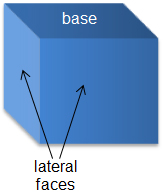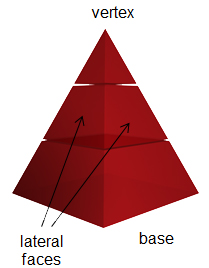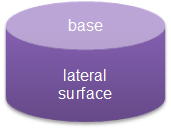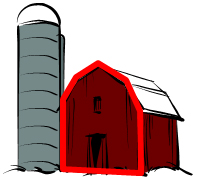A prism is a 3-dimensional figure that has two parallel, congruent bases connected by lateral faces. The lateral faces of a prism are always parallelograms and are usually rectangles. A prism is named by the shape of its base. So, a prism with a rectangular-shaped base is called a rectangular prism. Likewise, a prism with a hexagonal-shaped base is called a hexagonal prism.



